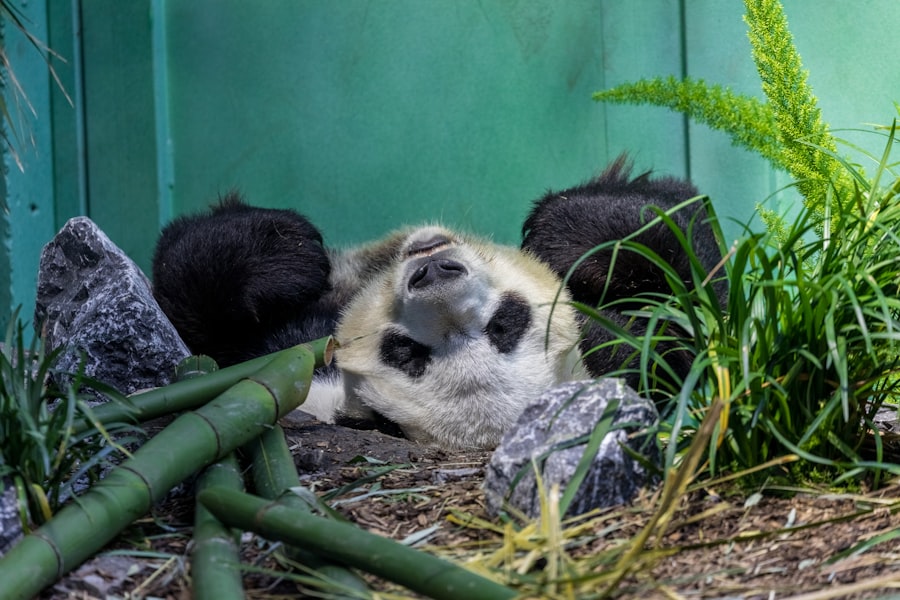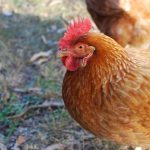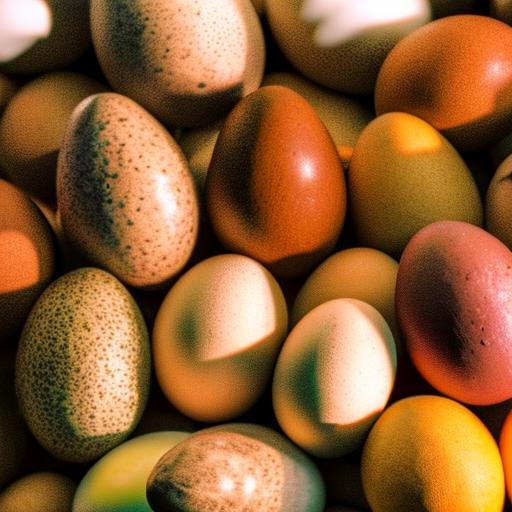Chicken breeds come in a wide range of sizes, from small bantams to large, imposing varieties. This article focuses on the largest chicken breeds, examining their distinctive traits, common applications, and the specific requirements for their care. These oversized breeds are of particular interest to poultry enthusiasts due to their impressive stature and potential for substantial meat and egg production.
The largest chicken breeds are characterized by their considerable size, commanding presence, and often distinctive appearance. These attributes make them popular choices for both hobbyist chicken keepers and commercial poultry operations. Understanding the characteristics and needs of these large breeds is essential for anyone considering raising chickens, whether for personal or professional purposes.
This exploration of the biggest chicken breeds will cover their physical characteristics, typical uses, care requirements, and notable examples. By examining these aspects, readers can gain a comprehensive understanding of the advantages and challenges associated with raising large chicken breeds, as well as their place in the broader context of poultry farming and chicken keeping.
Table of Contents
- 1 Characteristics of the Largest Chicken Breeds
- 2 Popular Uses for the Biggest Chicken Breeds
- 3 Care and Maintenance of Large Chicken Breeds
- 4 Challenges of Raising the Biggest Chicken Breeds
- 5 Famous Examples of the Largest Chicken Breeds
- 6 Conclusion and Final Thoughts on the Biggest Chicken Breeds
- 7 FAQs
Key Takeaways
- The biggest chicken breeds are known for their impressive size and unique characteristics, making them popular among poultry enthusiasts.
- Characteristics of the largest chicken breeds include their large size, heavy body, and ability to lay a good number of eggs.
- Popular uses for the biggest chicken breeds include meat production, egg laying, and exhibition purposes due to their impressive size and appearance.
- Care and maintenance of large chicken breeds require adequate space, proper nutrition, and regular health checks to ensure their well-being.
- Challenges of raising the biggest chicken breeds include higher feed costs, potential health issues due to their size, and the need for sturdy housing to accommodate their large bodies.
- Famous examples of the largest chicken breeds include the Jersey Giant, Brahma, and Cochin, which are known for their impressive size and unique characteristics.
- In conclusion, the biggest chicken breeds offer unique characteristics and are popular for various purposes, but they also come with challenges that require careful consideration for successful raising and maintenance.
Characteristics of the Largest Chicken Breeds
Size and Weight
These breeds can weigh anywhere from 8 to 13 pounds or more, with some individuals reaching even greater sizes. Their large stature is undoubtedly one of their most distinctive features.
Temperament and Characteristics
In addition to their size, these breeds are also known for their gentle and docile nature, making them a popular choice for backyard flocks. One of the most striking characteristics of the largest chicken breeds is their impressive plumage. Many of these breeds have beautiful, feathered legs and feet, as well as large, fluffy bodies that make them stand out in any flock.
Egg-Laying Abilities and Visual Appeal
Their feathers come in a wide variety of colors and patterns, adding to their visual appeal. In addition to their size and appearance, these breeds are also known for their excellent egg-laying abilities, making them a popular choice for those looking to raise chickens for both meat and eggs.
Popular Uses for the Biggest Chicken Breeds

The biggest chicken breeds are popular for a variety of uses, including meat production, egg-laying, and exhibition purposes. Due to their large size, these breeds are often raised for meat production, as they can provide a substantial amount of meat compared to smaller breeds. Additionally, many of these breeds are also excellent egg layers, making them a versatile choice for those looking to raise chickens for both meat and eggs.
In addition to their practical uses, the biggest chicken breeds are also popular for exhibition purposes. Their impressive size and striking appearance make them a favorite among poultry enthusiasts who enjoy showing their birds at fairs, exhibitions, and poultry shows. Many of these breeds have unique and eye-catching plumage that sets them apart from other chicken breeds, making them a popular choice for those looking to showcase their birds.
Care and Maintenance of Large Chicken Breeds
Caring for the biggest chicken breeds requires some special considerations due to their large size and unique needs. These breeds require ample space to roam and forage, as well as sturdy housing to accommodate their size. Additionally, they may require a higher level of nutrition compared to smaller breeds in order to support their growth and development.
When it comes to housing, the biggest chicken breeds require a coop that is spacious and well-ventilated to accommodate their size and prevent overcrowding. Additionally, they may benefit from access to a large outdoor run where they can stretch their legs and forage for food. Providing ample space and enrichment for these breeds is essential for their overall health and well-being.
In terms of nutrition, the biggest chicken breeds may require a higher level of protein in their diet to support their growth and development. Additionally, they may benefit from supplements such as calcium to support their bone health and egg production. Providing a balanced diet that meets the specific needs of these large breeds is essential for keeping them healthy and thriving.
Challenges of Raising the Biggest Chicken Breeds
While raising the biggest chicken breeds can be a rewarding experience, it also comes with its own set of challenges. One of the main challenges of raising these breeds is providing adequate space and housing to accommodate their large size. These breeds require more space compared to smaller breeds, both in terms of housing and outdoor run space.
Another challenge of raising the biggest chicken breeds is managing their nutrition and ensuring they receive a balanced diet that meets their specific needs. These breeds may require a higher level of protein and other nutrients compared to smaller breeds in order to support their growth and development. Additionally, providing access to fresh water and supplements such as calcium is essential for keeping these birds healthy.
In addition to space and nutrition considerations, another challenge of raising the biggest chicken breeds is managing their health and well-being. These breeds may be more prone to certain health issues due to their large size, so it’s important to monitor them closely for any signs of illness or injury. Providing regular veterinary care and monitoring their overall health is essential for keeping these birds in top condition.
Famous Examples of the Largest Chicken Breeds

Striking Appearances and Gentle Natures
The Brahma is another famous example of a large chicken breed, known for its striking appearance and impressive size. This breed can weigh up to 12 pounds or more and is known for its beautiful feathered legs and feet. The Cochin is also a well-known large breed, with individuals reaching weights of up to 11 pounds or more. This breed is popular for its gentle nature and striking appearance, making it a favorite among poultry enthusiasts.
Impressive Egg-Laying Abilities
The Orpington is another famous example of a large chicken breed, known for its impressive size and excellent egg-laying abilities. This breed can weigh up to 10 pounds or more and comes in a variety of beautiful feather colors and patterns.
Popular Among Poultry Enthusiasts
These famous examples of the largest chicken breeds showcase the impressive size and unique qualities that make these breeds so popular among poultry enthusiasts.
Conclusion and Final Thoughts on the Biggest Chicken Breeds
In conclusion, the biggest chicken breeds are known for their impressive size, striking appearance, and versatile uses. These breeds are popular among poultry enthusiasts for their unique qualities and potential for meat and egg production. While raising the biggest chicken breeds comes with its own set of challenges, it can also be a rewarding experience for those looking to raise impressive and eye-catching birds.
Whether you’re drawn to the Jersey Giant, Brahma, Cochin, Orpington, or another large breed, there are plenty of options available for those looking to add some impressive birds to their flock. With proper care and maintenance, these breeds can thrive and provide a valuable source of meat and eggs for those looking to raise chickens for both practical and exhibition purposes. Overall, the biggest chicken breeds offer a unique and rewarding experience for poultry enthusiasts looking to raise impressive birds with striking appearances and versatile uses.
If you’re interested in learning more about breeding and raising poultry, you might want to check out this article on mating season for turkeys. It provides valuable information on the breeding habits of turkeys and can be a helpful resource for anyone looking to expand their knowledge of poultry breeding.
FAQs
What are the biggest chicken breeds?
Some of the biggest chicken breeds include the Jersey Giant, Brahma, Cochin, and Orpington.
How big can the biggest chicken breeds get?
The Jersey Giant, one of the largest chicken breeds, can weigh up to 13 pounds for hens and 15 pounds for roosters. Brahmas can also reach similar weights.
What are the characteristics of the biggest chicken breeds?
Biggest chicken breeds are known for their large size, heavy body, and feathered legs. They are also known for being docile and good for meat production.
What are the advantages of raising the biggest chicken breeds?
Raising the biggest chicken breeds can be advantageous for meat production, as they can provide a substantial amount of meat due to their large size. They are also known for being good foragers and can thrive in free-range environments.
What are some considerations when raising the biggest chicken breeds?
When raising the biggest chicken breeds, it’s important to provide them with adequate space and shelter due to their large size. Additionally, they may require more feed and resources compared to smaller chicken breeds.
Meet Walter, the feathered-friend fanatic of Florida! Nestled in the sunshine state, Walter struts through life with his feathered companions, clucking his way to happiness. With a coop that’s fancier than a five-star hotel, he’s the Don Juan of the chicken world. When he’s not teaching his hens to do the cha-cha, you’ll find him in a heated debate with his prized rooster, Sir Clucks-a-Lot. Walter’s poultry passion is no yolk; he’s the sunny-side-up guy you never knew you needed in your flock of friends!








